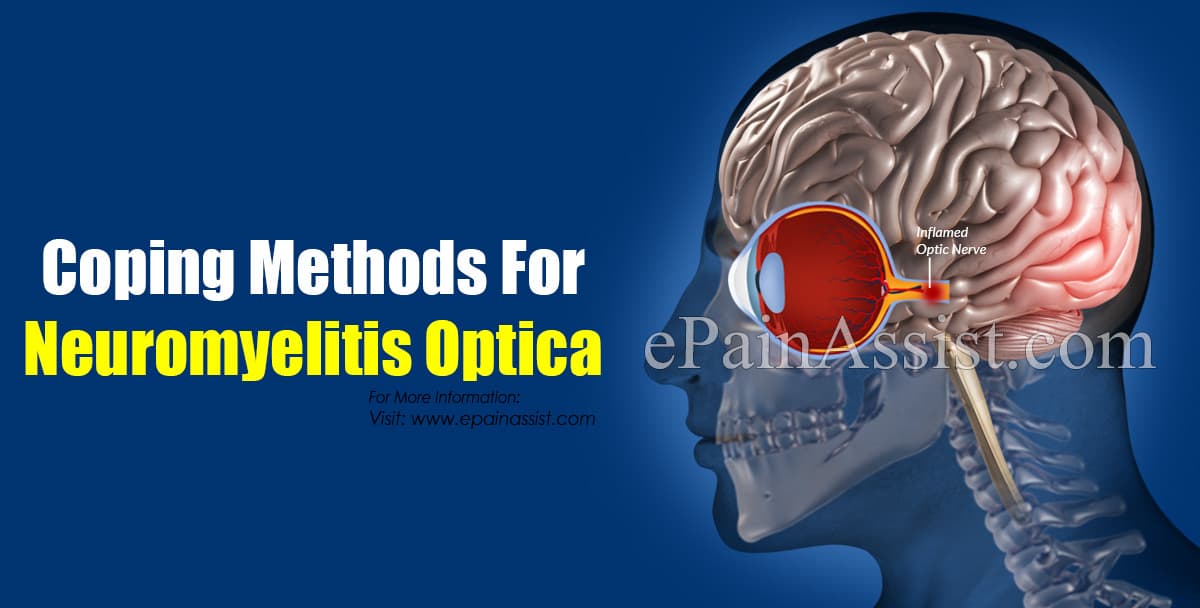Neuromyelitis optica is an autoimmune disorder that is characterized by relapses of optic neuritis and transverse myelitis. The disease is more common in females than in males and mostly the onset is around the fourth decade of life. Earlier, it was thought to be a variant of multiple sclerosis, but after the identification of aquaporin 4 antibodies (present in about 70% of all cases), it is considered distinct from multiple sclerosis. It is also seen that many treatments strategies, such as treatment with interferon beta used for the management of multiple sclerosis, has no effect or has a debilitating effect in neuromyelitis optica. Therefore, it is of utmost importance to identify both the diseases and manage them appropriately so that there is no disability caused by incorrect treatment.(1)

Coping Methods For Neuromyelitis Optica
Since neuromyelitis optica is a rare disease, it is important to provide information, education and increased awareness to healthcare providers to diagnose the condition and start treatment as early as possible. Patients with long term steroid therapy have potential side effects of steroids such as weight gain and significant stretch marks that can largely impact their social image and confidence that leads to reduced socialization and peer support. The multidisciplinary team needs to give dietary and exercise support to these patients. The relapses may also lead to relapsing mood changes, which further needs psychological management and peer support.(1)
Increased treatment is associated with a better quality of life, both in terms of physical and emotional functioning. However, reduced quality of life is related to a decrease in functioning, which is directly related to a financial burden. The impact of neuromyelitis optica is not only limited to physical and emotional costs, but including financial burden, particularly prescription medications cost, travel cost, hospitalization, and specialist care. There are increased concerns about the future due to the unpredictable nature of the disease and worsening of symptoms with each relapse.(2)
Patients are also concerned about treatment options due to their poor efficacy and intolerable side effects and therefore there is an increased rate of medication adjustments. The commonly used medications are rituximab, prednisone or corticosteroids, azathioprine, and mycophenolate mofetil. The greatest efficacy and tolerability is seen with rituximab or mycophenolate mofetil, whereas, azathioprine is not that well tolerated or that effective.(2)
It is important to provide multidisciplinary care and coordination of specialist care along with local services including housing, financial support, benefits that help the patient to deal with the burden of neuromyelitis optica.(1)
Neuromyelitis optica starts with a debilitating attack of optic neuritis or transverse myelitis. These relapses can occur within hours and every relapse leads to further disability that may require a period of rehabilitation. Unilateral/bilateral optic neuritis may lead to loss of vision or color, pain on eye movement, or central scotoma. Transverse myelitis is associated with bilateral motor weakness, numbness, banding, paresthesia, neuropathic pain, tonic spasms, itching, bladder bowel dysfunction, hiccups, nausea, vomiting, vertigo, and respiratory failure.(1)
The very first symptom of neuromyelitis optica has a debilitating impact that causes severe disability in a very short period of time that may require many extended periods of rehabilitation. Since, initial symptom is either of optic neuritis or myelitis, if patient experiences only optic neuritis and is examined by ophthalmologist who does not have specialized neurological knowledge to suspect the diagnosis of neuromyelitis optica, the patient experiences two to three relapses before the diagnosis is confirmed, which would lead to the accumulation of disability from increased length of time diagnosing and starting an effective treatment.(1)
Each relapse amounts to residual debility that can result in severe loss of vision and/or paralysis of limbs; therefore, it is of utmost importance to diagnose and start effective therapy immediately. The management of symptoms is provided by a team of professionals including ophthalmologists, neurologists, physiotherapists, occupational therapists, nurses, and dieticians. It is important to tailor a management plan according to the needs of each individual.(1)
Also Read:
